
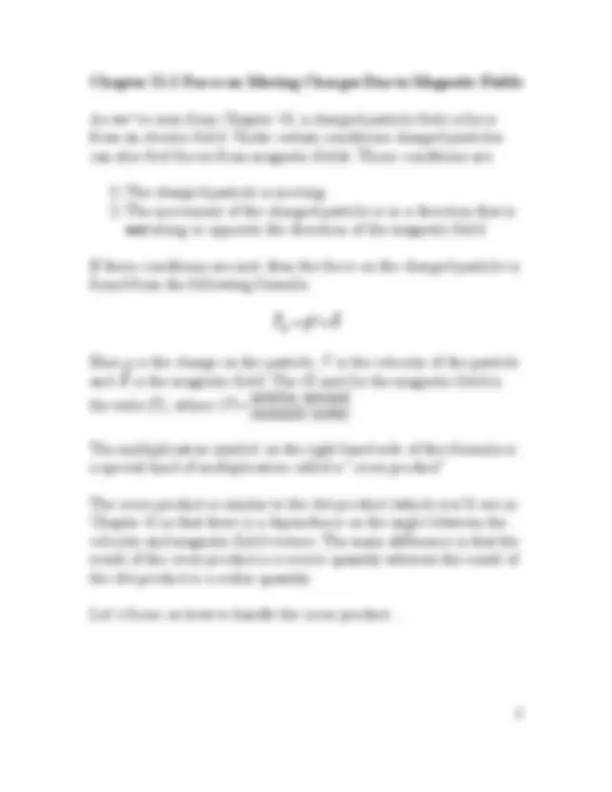
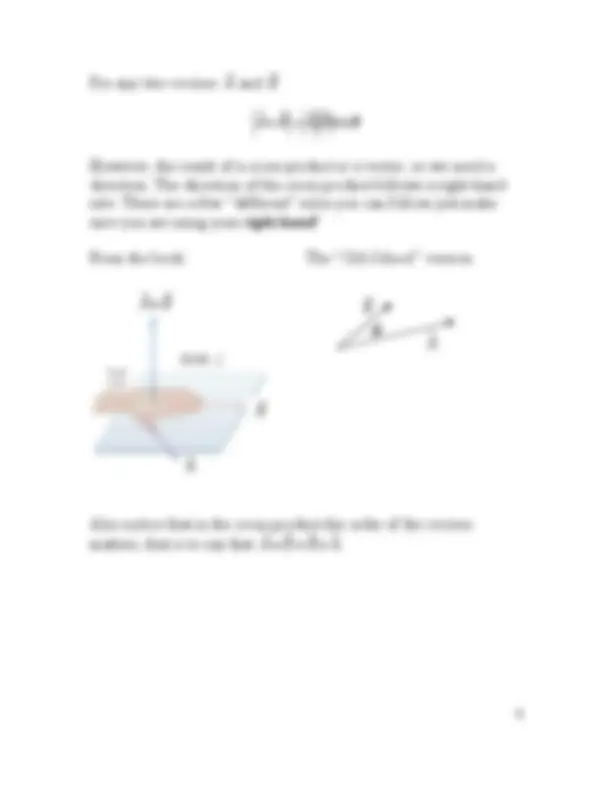
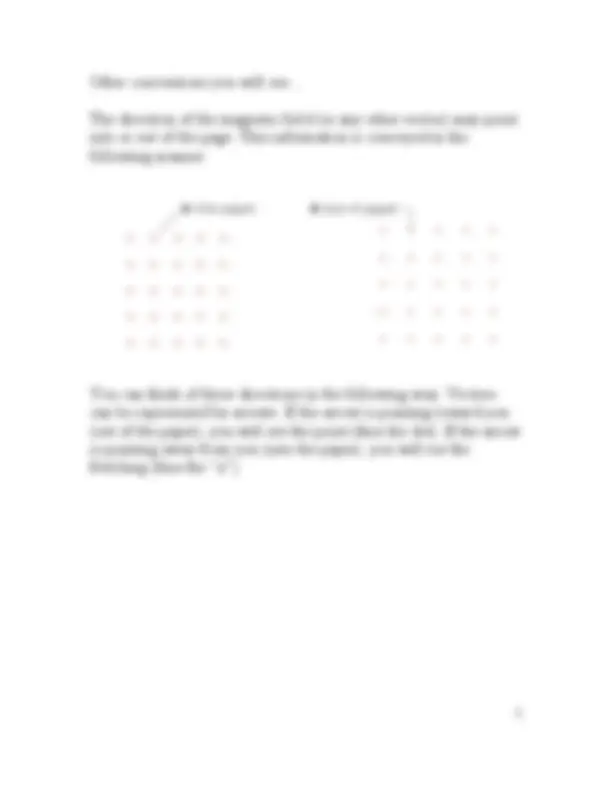
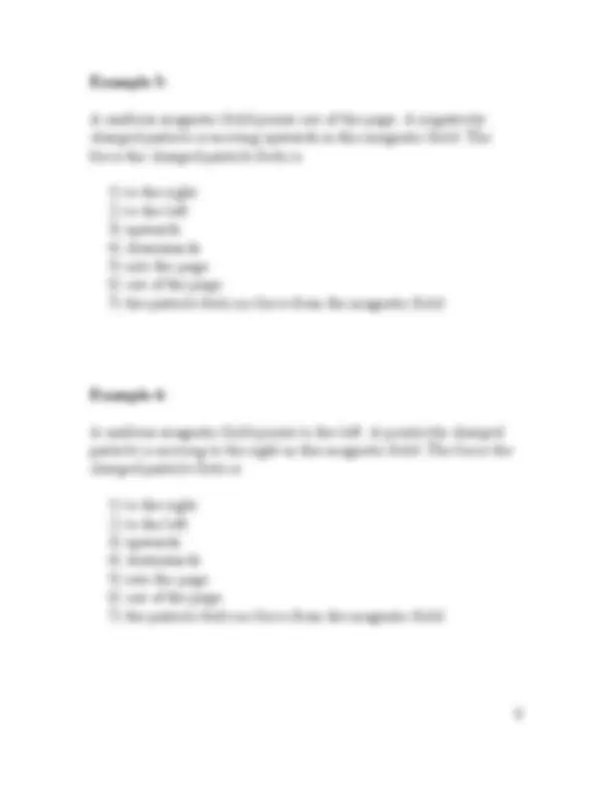
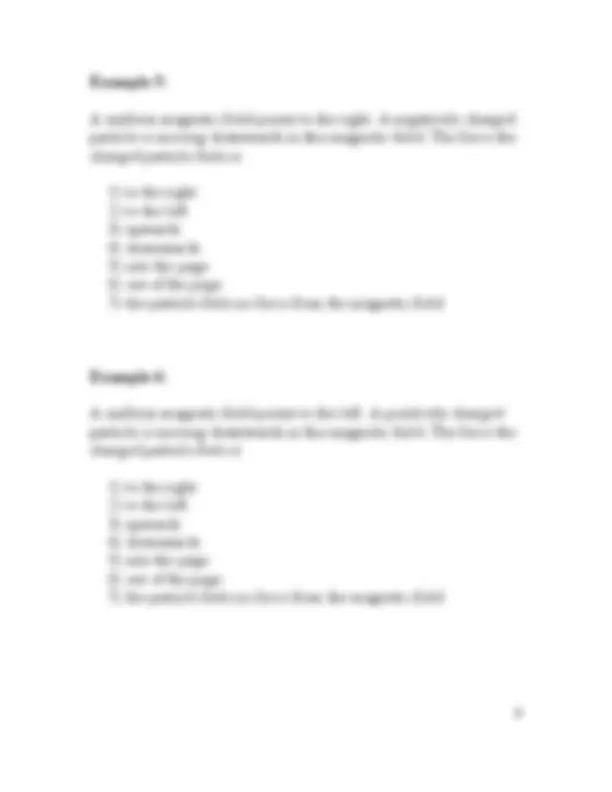
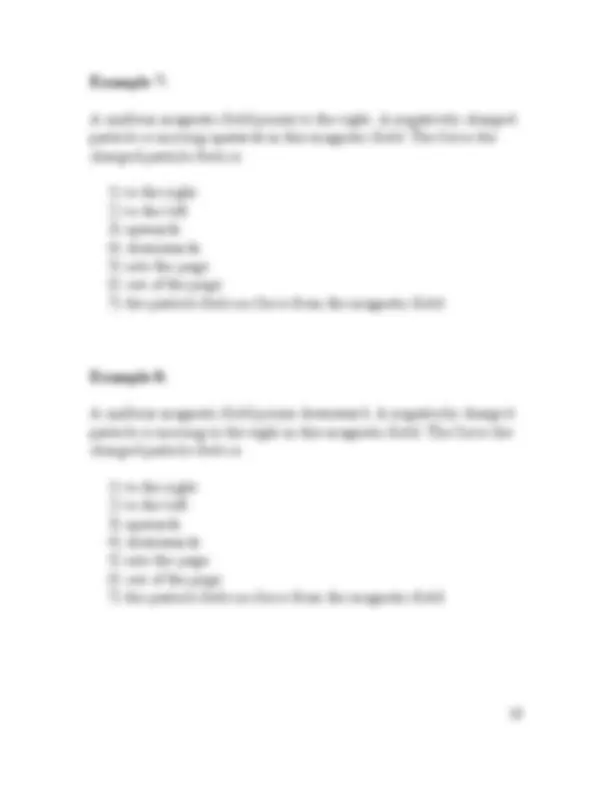
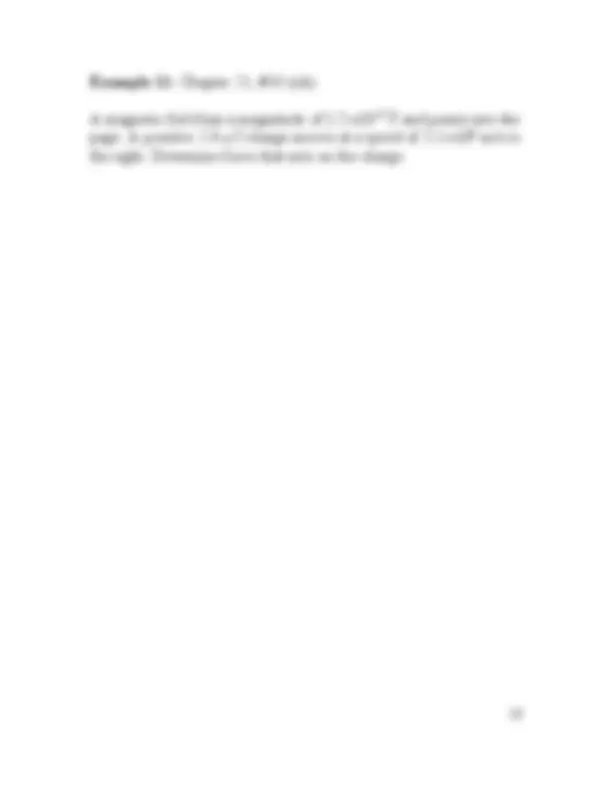
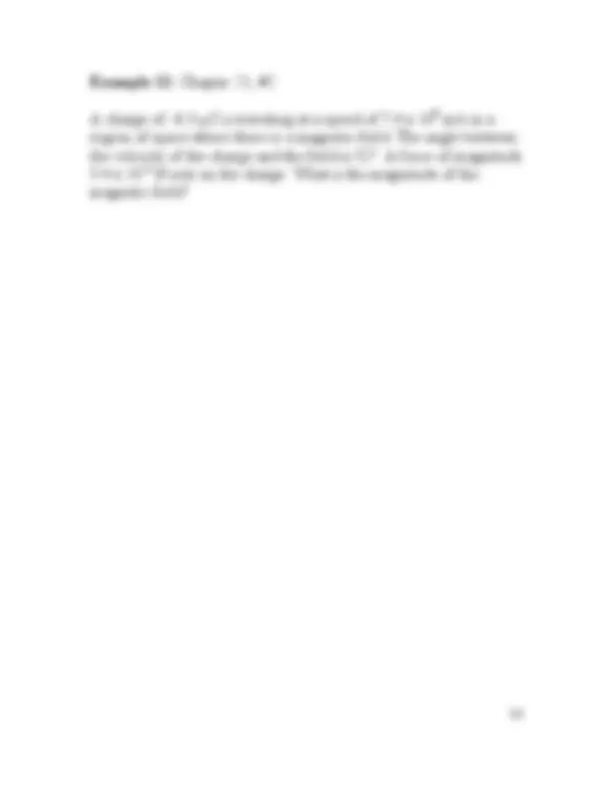
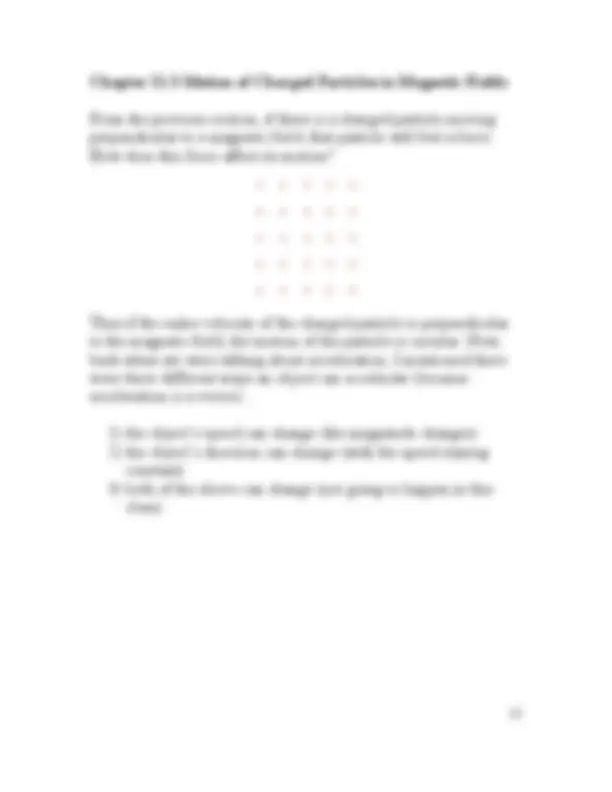
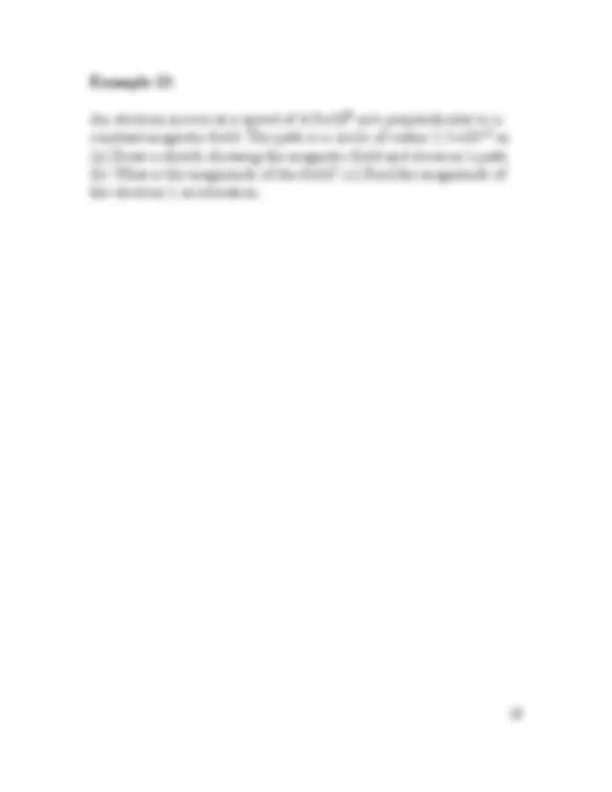
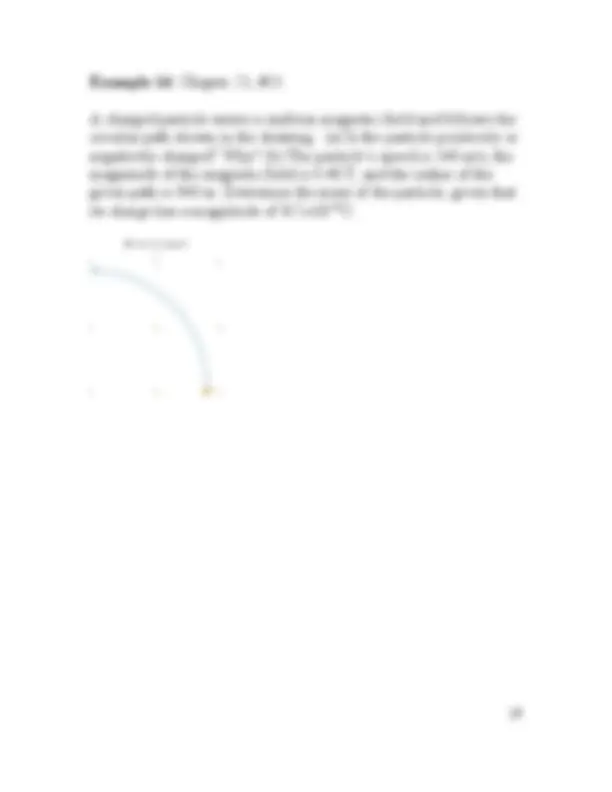
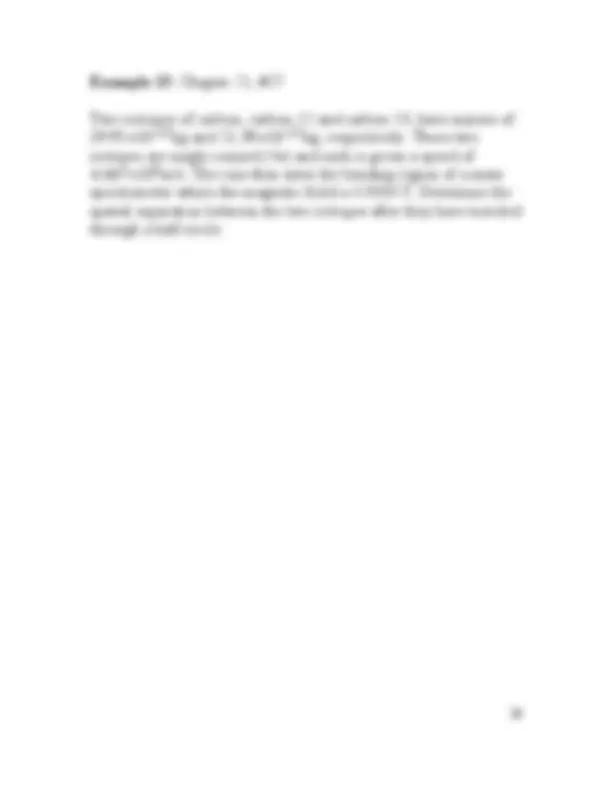
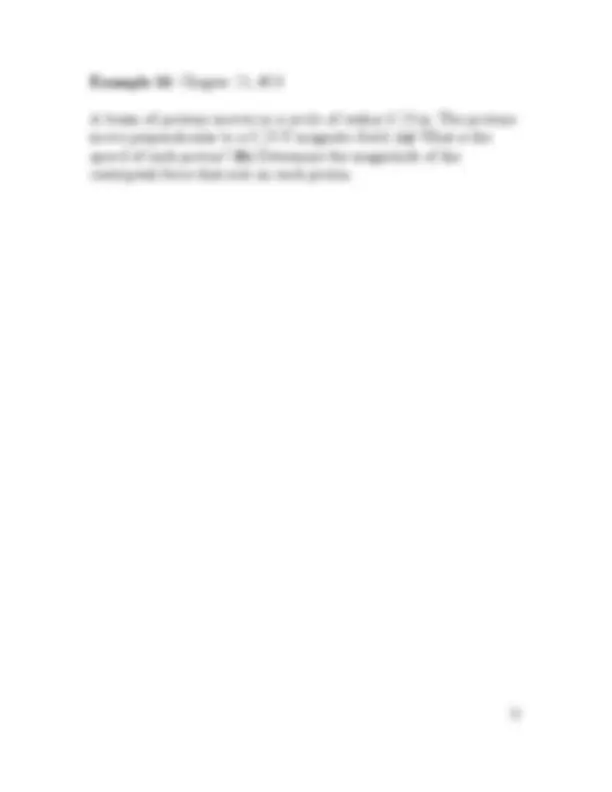
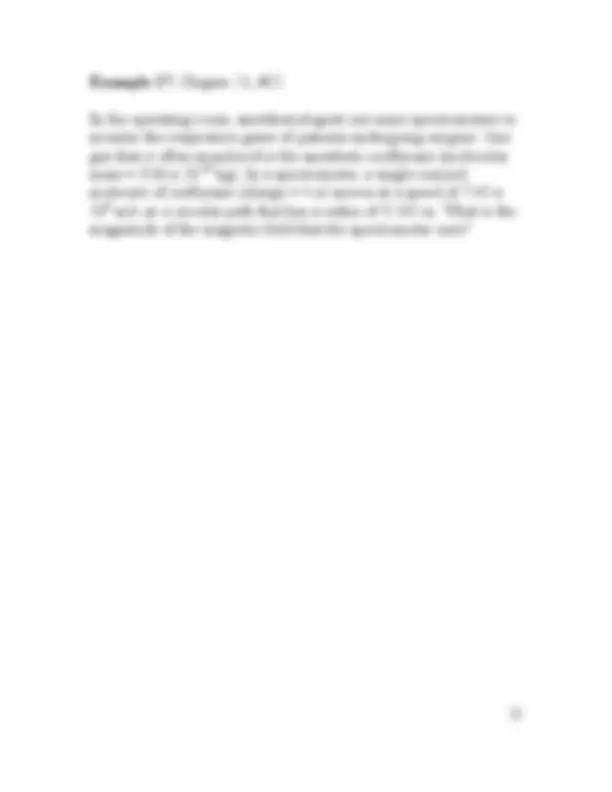
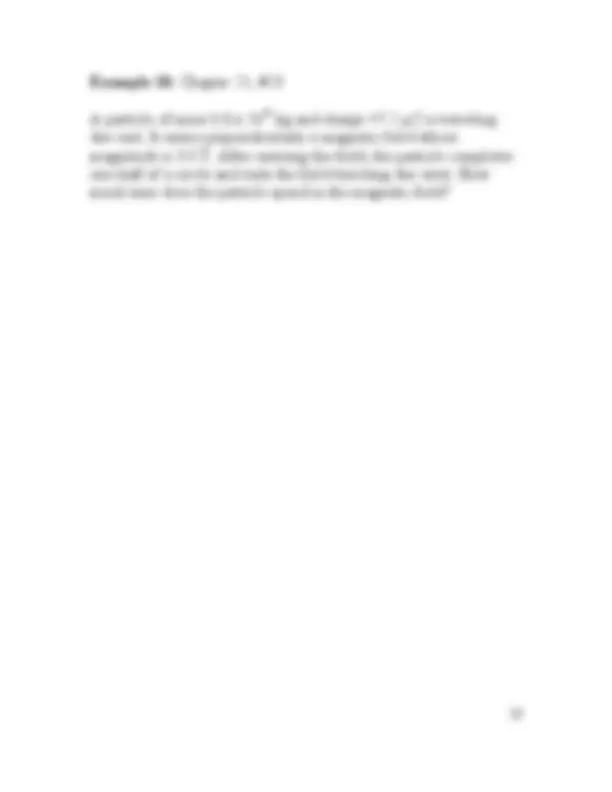


Study with the several resources on Docsity

Earn points by helping other students or get them with a premium plan


Prepare for your exams
Study with the several resources on Docsity

Earn points to download
Earn points by helping other students or get them with a premium plan
Community
Ask the community for help and clear up your study doubts
Discover the best universities in your country according to Docsity users
Free resources
Download our free guides on studying techniques, anxiety management strategies, and thesis advice from Docsity tutors
Material Type: Notes; Class: Essential Physics; Subject: Physics; University: Duquesne University; Term: Unknown 1989;
Typology: Study notes
1 / 23

This page cannot be seen from the preview
Don't miss anything!
















Chapter 21.1 Magnetic Fields
If you ever played with magnets as a kid, you’ll know the
following:
given the labels of North and South.
Sources of magnetic fields
magnetic moments & magnetic domains
electric currents
For any two vectors
€
A and
€
€
B sin θ
However, the result of a cross product is a vector, so we need a
direction. The direction of the cross product follows a right-hand
rule. There are a few “different” rules you can follow just make
sure you are using your right hand!
From the book: The “Old School” version
Also notice that in the cross product the order of the vectors
matters, that is to say that
€
€
€
€
θ
€
€
€
Other conventions you will see…
The direction of the magnetic field (or any other vector) may point
into or out of the page. This information is conveyed in the
following manner.
You can think of these directions in the following way. Vectors
can be represented by arrows. If the arrow is pointing toward you
(out of the paper), you will see the point (thus the dot). If the arrow
is pointing away from you (into the paper), you will see the
fletching (thus the “x”).
Example 1:
A uniform magnetic field points to the right. A positively charged
particle is moving upwards in this magnetic field. The force the
charged particle feels is
to the right
to the left
upwards
downwards
into the page
out of the page
the particle feels no force from the magnetic field
Example 2:
A uniform magnetic field points into the page. A positively
charged particle is moving upwards in this magnetic field. The
force the charged particle feels is
to the right
to the left
upwards
downwards
into the page
out of the page
the particle feels no force from the magnetic field
Example 3:
A uniform magnetic field points out of the page. A negatively
charged particle is moving upwards in this magnetic field. The
force the charged particle feels is
to the right
to the left
upwards
downwards
into the page
out of the page
the particle feels no force from the magnetic field
Example 4:
A uniform magnetic field points to the left. A positively charged
particle is moving to the right in this magnetic field. The force the
charged particle feels is
to the right
to the left
upwards
downwards
into the page
out of the page
the particle feels no force from the magnetic field
Example 7:
A uniform magnetic field points to the right. A negatively charged
particle is moving upwards in this magnetic field. The force the
charged particle feels is
to the right
to the left
upwards
downwards
into the page
out of the page
the particle feels no force from the magnetic field
Example 8:
A uniform magnetic field points downward. A negatively charged
particle is moving to the right in this magnetic field. The force the
charged particle feels is
to the right
to the left
upwards
downwards
into the page
out of the page
the particle feels no force from the magnetic field
Example 9: Chapter 21, #
Due to friction with the air, an airplane has acquired a net charge
of
€
− 5
C. The plane moves with a speed of
€
2
m/s at
an angle
€
θ with respect to the earth’s magnetic field, the
magnitude of which is
€
− 5
T. The magnetic force on the
airplane has a magnitude of
€
− 7
N. Find the angle
€
θ. (There
are two possible angles.)
Example 11: Chapter 21, #10 (ish)
A magnetic field has a magnitude of
€
− 3
T and points into the
page. A positive 1.8 μC charge moves at a speed of
€
6
m/s to
the right. Determine force that acts on the charge.
Example 12: Chapter 21, #
A charge of - 8.3 μC is traveling at a speed of 7.4 x 10
6
m/s in a
region of space where there is a magnetic field. The angle between
the velocity of the charge and the field is 52˚. A force of magnitude
5.4 x 10
N acts on the charge. What is the magnitude of the
magnetic field?
In the second case, acceleration due to changing direction with a
constant speed is called centripetal acceleration and found using
€
a
centripetal
= a
c
v
2
r
If only a component of the velocity is perpendicular to the
magnetic field then the motion is no longer circular. The motion is
helical because the component of the velocity parallel (or anti-
parallel) to the field does not affect the particle’s trajectory.
Entire
€
v perpendicular to
€
B Part of
€
v perpendicular to
€
Chapter 21. 4 The Mass Spectrometer
Using Newton’s Second Law for charged particles moving in a
magnetic field (and ignoring other forces except for the magnetic
force) you find that the radius of the circular path depends on the
mass of the particle.
€
F = m
a ∑
€
B
= q
v sin θ Let
€
θ = 90˚
This behavior is extremely useful. Machines called mass
spectrometers exploit this behavior for different purposes.
As the book points out, physicists use mass spectrometers to
determine the relative abundances of isotopes (as well as their
masses). Chemists use these to help them identify unknown
molecules, and anesthesiologists use them to gather information on
the gases in a patient’s lungs.
Example 14: Chapter 21, #
A charged particle enters a uniform magnetic field and follows the
circular path shown in the drawing. (a) Is the particle positively or
negatively charged? Why? (b) The particle’s speed is 140 m/s, the
magnitude of the magnetic field is 0.48 T, and the radius of the
given path is 960 m. Determine the mass of the particle, given that
its charge has a magnitude of
€
− 4
Example 15: Chapter 21, #
Two isotopes of carbon, carbon-12 and carbon-13, have masses of
€
− 27
kg and
€
− 27
kg, respectively. These two
isotopes are singly ionized (+ e ) and each is given a speed of
€
5
m/s. The ions then enter the bending region of a mass
spectrometer where the magnetic field is 0.8500 T. Determine the
spatial separation between the two isotopes after they have traveled
through a half-circle.